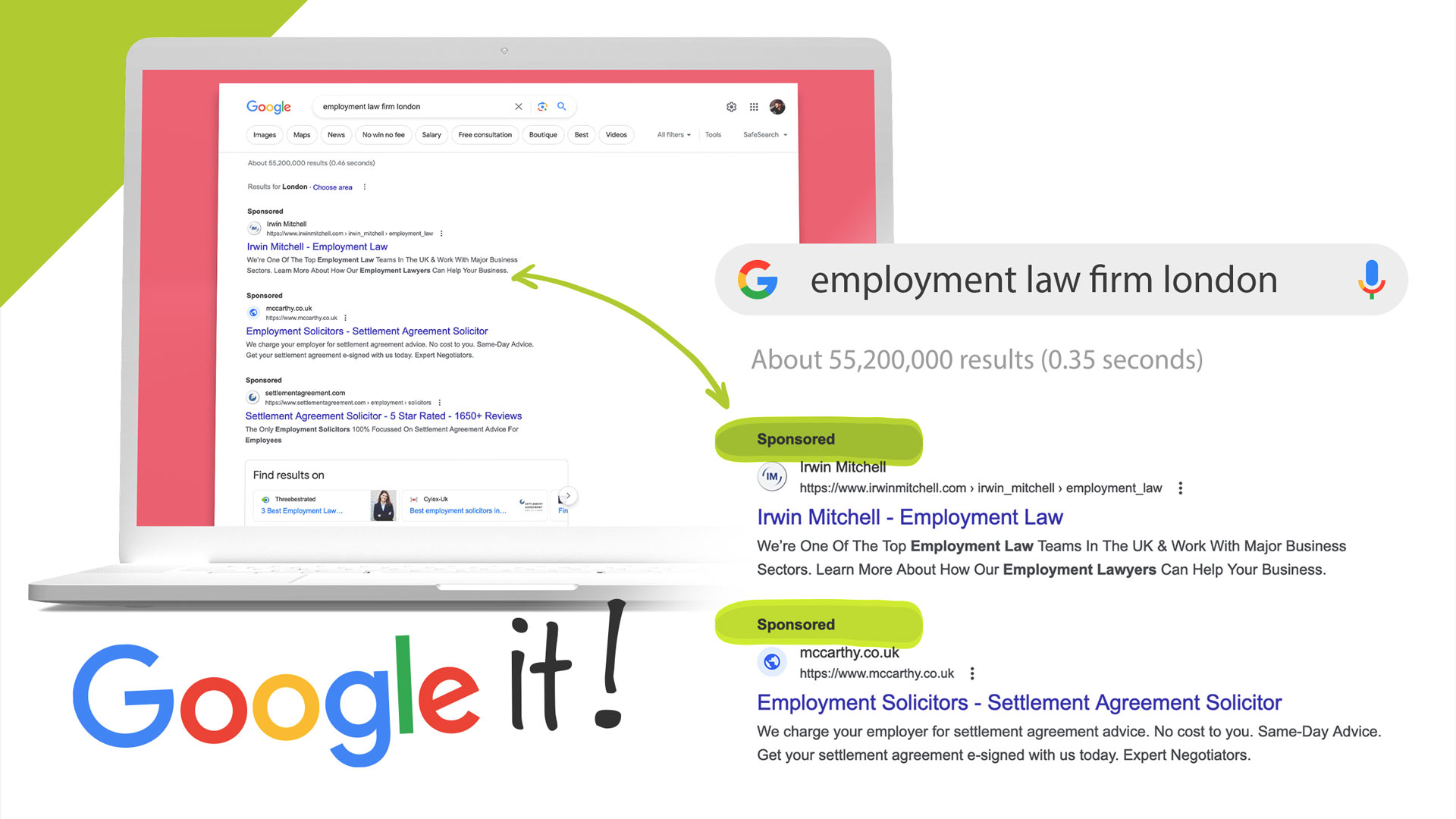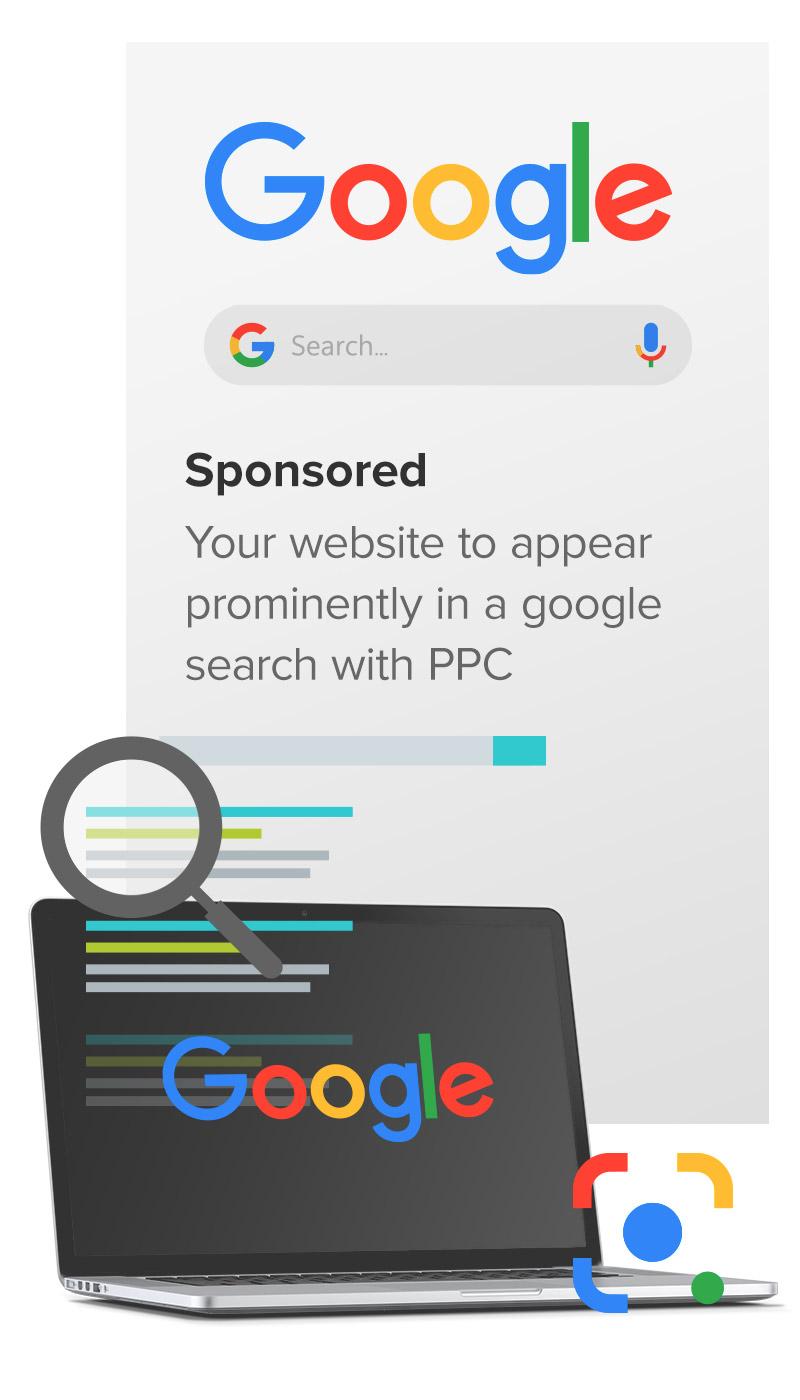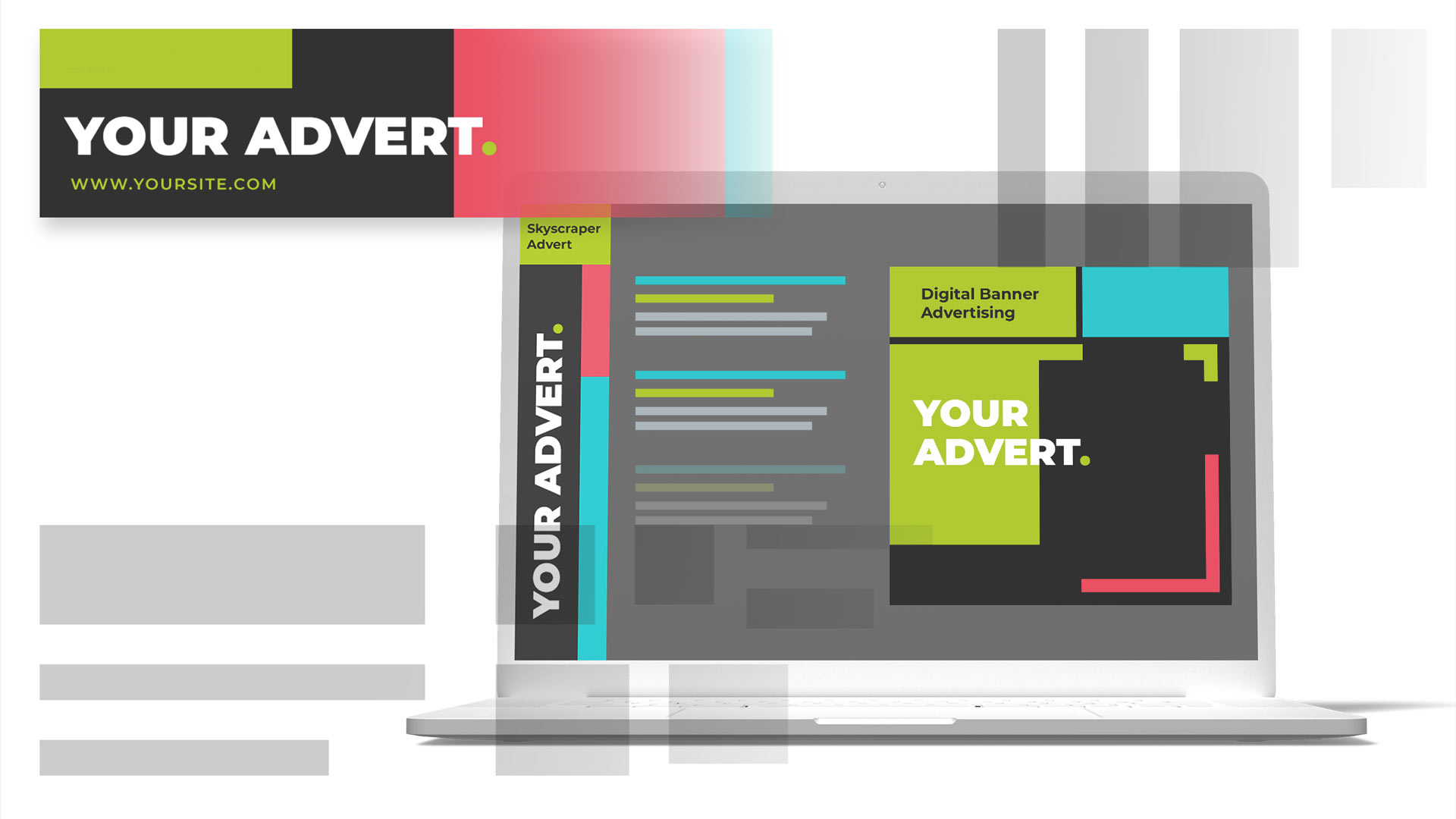Online Advertising and PPC
Digital advertising refers to marketing through online channels, such as websites, social media platforms, streaming content and more. Some of these tools require payment to put your business in front of your ideal client but you can also create free content.

Search Advertising and Pay-Per-Click
When you look for something online you ‘Google it’ which serves up millions of results with people seeing the first prominent listings at the top marked “sponsored”. Those are PPC (Pay Per Click) search ads from Google Ads, Google’s advertising platform and because people see those first, they trust them and click on the link. Appearing prominently in a Google search can sometimes be a difficult journey through SEO (Search Engine Optimisation) marketing – or you can cut to the front with a VIP pass and get the best seats on Google, but for this, you’ll need to pay and ‘sponsor’ your advert to appear in a prominent position. There is a process and skill to set these search adverts up but it’s extremely effective for the most obvious of reasons – your advert is served up to people at the exact moment they are looking online for your product or service.
Benefits of search ads
- Targeted Reach: Reach users actively searching for specific products or information.
- Cost Control: Set and manage budget constraints with flexibility.
- Immediate Results: Achieve quick visibility and potential conversions.
- Measurable ROI: Track and analyse ad performance with detailed metrics.
- Keyword Control: Choose specific keywords to align with your offerings.
- Geographic Targeting: Reach users based on location, improving relevance.
- Advert Customisation: Tailor ad copy and extensions to suit your goals.
- Competitive Insights: Gain insights into competitor strategies.
- Ad Scheduling: Control when and where your ads appear.
- Remarketing: Re-engage users who have previously interacted with your site.
Note:
PPC is sometimes referred to as CPC, but there is a subtle difference. PPC is the term for pay-per-click marketing, whereas cost-per-click defines the actual amount an advertiser pays per click.
Search advertising is also known as paid search, PPC, search engine marketing, search ads, or text ads.
Pay-per-click advertising is not just for search engines. You can run PPC ads in a variety of places, including:
- Social media platforms (see below)
- Banners on websites (see below)
- Videos on YouTube
- Marketplaces like Amazon


Display and Banner Advertising
Display banner advertising, often simply referred to as banner ads, is a form of online advertising that involves the display of graphic, and visual advertisements on websites, mobile apps, and other digital platforms. These adverts typically appear in the form of rectangular or square images or animations and they are placed strategically within the content or layout of a webpage. Advertising this way is a potent tool in a digital marketer’s arsenal, offering a combination of visual appeal, reach, versatility, and performance tracking.
Benefits of Display Advertising
Display banner advertising can be effective for several reasons. Firstly, it provides a visually engaging way to grab the attention of the target audience. Well-designed banners with eye-catching graphics and concise messaging can create immediate brand recognition and curiosity. Secondly, display banner advertising offers extensive reach, allowing businesses to showcase their products or services to a broad online audience.
With precise targeting options, it’s possible to publish adverts right where the target audience is likely to be and so can reach the right people at the right time, increasing the likelihood of conversion. Additionally, these ads are versatile and can be tailored to specific campaign objectives, whether it’s brand awareness, lead generation, or driving website traffic. Moreover, they offer measurable results, enabling advertisers to track clicks, impressions, and conversions, which provides valuable data for optimising campaigns.
Retargeting Adverts
These are display adverts that target users who have previously interacted with a brand’s website, products, or services but did not complete a desired action, such as making a purchase or enquiry.
One of the primary reasons for the effectiveness of retargeting ads is their ability to re-engage users who have already shown an interest in a brand, making them more likely to convert. By reminding users of products or services they’ve previously viewed, retargeting ads often lead to higher click-through and conversion rates compared to just standard display advertising.

Display Advertising takes different forms
- Banner Ads: Visual ads displayed on websites, often in standard sizes.
- Video Ads: Video content shown before, during, or after online videos.
- Interstitial Ads: Full-screen ads that appear before a webpage’s content.
- Native Ads: Ads that match the form and function of the platform they appear on.
- Rich Media Ads: Interactive and engaging ads with multimedia elements.

Social Media Advertising
In the digital age, social media advertising has revolutionised the way businesses and brands connect with their target audiences. The ability of social media to reach vast audiences, harness the power of dynamic visual storytelling, encourage real-time engagement, and provide data-driven insights makes it a crucial strategy for businesses looking to foster their brand, drive conversions, and stay competitive. Through our screens, brands now have access to us wherever we are, at any time and perhaps their greatest power is that they meet us at a place in which we’re open to discover, engage, be distracted and entertained.
Social media advertising is exceptionally effective for several reasons
Firstly, it offers unparalleled access to a vast and diverse audience. Platforms like Facebook, Instagram, Twitter, and LinkedIn have billions of active users, allowing advertisers to target their ads with precision to reach specific demographics, interests, and behaviours.
Secondly, social media advertising encourages engagement and interaction with audiences. Users frequently like, share, comment on, or click through to adverts, facilitating direct interaction and fostering brand loyalty. Moreover, social media platforms provide detailed analytics and performance metrics, enabling advertisers to measure and optimise their campaigns in real-time.
Social media advertising offers a variety of ad formats to suit different campaign objectives. From sponsored posts and stories to video ads, carousel ads, influencer partnerships, and more, advertisers can choose the format that aligns best with their goals and target audience.
Lastly, the ability to create visually appealing and multimedia-rich adverts, including images, videos, and carousels, enhances the storytelling and brand messaging, making it easier to capture the attention and interest of potential customers. All these factors contribute to the undeniable effectiveness of social media advertising in today’s digital marketing landscape.

Is Social Media Advertising Cost-effective?
It can be. Social media advertising offers flexible budgeting options, making it accessible to businesses of all sizes. Advertisers can set daily or lifetime budgets, bid strategies, and choose from various pricing models, such as cost per click (CPC), cost per thousand impressions (CPM), or cost per acquisition (CPA), to control costs and maximize ROI.
Let’s meet up
It starts with an introductory meeting – You can just ask for some one-off advice, or you can engage our services on an hourly rate, project fee or retainer basis – we are totally flexible to your needs. Get in touch by phone or email, or complete the enquiry form.
